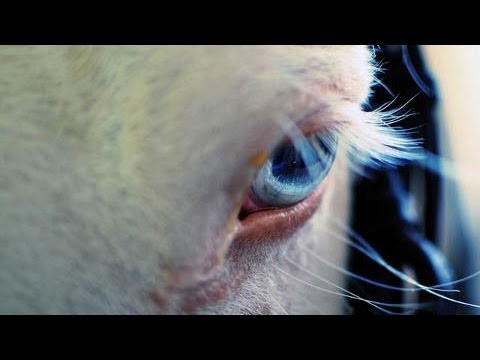Praying Mantises and 3D Vision: Lessons for Robotics
Summary
Researchers at Newcastle University have been conducting a fascinating study on the way praying mantises achieve 3D vision through sensing motion or change. Using a 3D glasses system with coloured filters, researchers are analyzing the insects’ behavior to understand the differences in how their 3D vision system works compared to humans. The team has discovered that mantises have neurons tuned to stereoscopic distance at all levels of the brain and a feedback loop that suggests a complicated circuit. This transcript explains how the research outcomes of the study may have implications for the development of robotics, particularly through the use of change as a computational method in certain applications, such as drones.
Table of Contents
- Mantises and their 3D Vision
- The Research of Ronnie
- Comparing Insects and Mammals
- Potential Applications for Robotics
Mantises and their 3D Vision
Question: How do praying mantises achieve 3D vision?
Answer: Praying mantises sense motion or change with their two eyes, which helps them perceive depth and see objects in 3D. Their vision works by comparing the position of objects between their two eyes.
Question: What is the research being done on this topic?
Answer: Researchers are studying the difference between the 3D vision of praying mantises and humans. They are doing this by recording individual nerve cells in the mantises’ brains to study the 3D vision system’s neural computations.
The Research of Ronnie
Question: Who discovered the neural basis of 3D vision in mantises?
Answer: Ronnie, a researcher at Newcastle University, conducted the research on the neural basis of 3D vision in mantises.
Question: What did Ronnie’s research discover?
Answer: Ronnie found that mantises have neurons tuned to stereoscopic distance at all levels of the brain and a feedback loop that suggests a complicated circuit. This discovery suggests that the neural computations involved in 3D vision may be more similar between insects and mammals than originally thought.
Question: What kind of recording equipment did Ronnie use during the research?
Answer: Ronnie utilized recording equipment to study individual nerve cells inside the mantises’ brain.
Comparing Insects and Mammals
Question: How does the way praying mantises achieve 3D vision differ from humans?
Answer: Praying mantises achieve 3D vision by sensing motion or change, whereas humans perceive depth by correlating light and dark patterns in each eye.
Question: What is the difference in neural computations involved in 3D vision between insects and mammals?
Answer: Insects use the pattern of change, while mammals use the pattern of light and dark. This discovery marks a significant difference between the 3D vision system of insects and mammals.
Potential Applications for Robotics
Question: How can the research on praying mantises’ 3D vision have implications for the development of robotics?
Answer: The use of change as a computational method, which mantises use to achieve 3D vision, could be implemented in certain robotic applications, such as drones. The research can help improve the way robots and drones navigate through changing environments using 3D vision.
Question: In what ways do drones currently use 3D vision technology?
Answer: Drones currently use sensors to map their surroundings using infrared and laser technology. The mapping allows the drones to identify obstacles and avoid them. However, their current technologies are not as advanced as the praying mantis 3D vision. By implementing the way mantises perceive 3D vision, drones’ perception can be much more intricate and efficient.
Conclusion
In conclusion, the study of praying mantises and their 3D vision system has been found to have significant implications for the development of robotics. Ronnie’s research on the neural basis of 3D vision in mantises suggests that neural computations may not be as different between insects and mammals as initially thought. By using the way mantises perceive 3D vision, the development of robotic systems, such as drones, can become more efficient, complex and practical. With further research, we may find more ways to adapt animal vision to improve artificial intelligence in the future.







